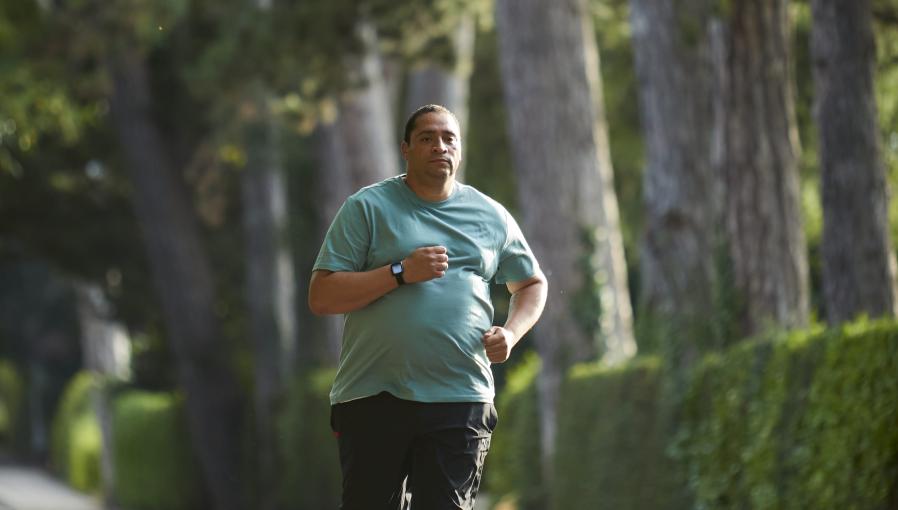Exercising with a temporary gastric balloon
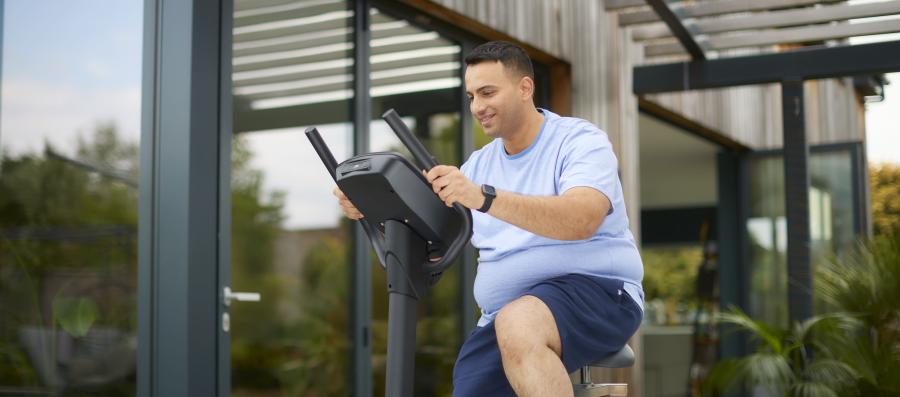
Whether you are considering having a temporary gastric balloon or perhaps already have the Allurion Balloon in place, an exercise routine is important for all of us, because it benefits our mental well-being and physical health. And, of course, it helps in the management of body weight. A gastric balloon is highly effective for weight loss, because it helps you feel fuller while eating less, but this is just one part of the solution for healthy weight loss. Read on to learn more about exercising when you have a weight loss balloon, and how the Allurion Programme helps you stay motivated.
Can I exercise with a gastric balloon?
Yes! Exercise is important for all of us, because it benefits our mental wellbeing and physical health – and, of course, it will help you on your weight loss journey. And this doesn’t change if you have had a gastric balloon placed, which simply makes it easier for you to eat smaller meals and recognize and manage your physical hunger.
In fact, research suggests that changing what we eat and getting more physically active leads to 20% greater weight loss than changing eating habits alone.1

Staying physically active helps you accelerate the weight loss, but most impactful perhaps is the evidence that it helps to keep off the pounds you have lost for the longer term. This is because exercise is key in preserving calorie-burning lean body mass (LBM) that is so important for short-term and long-term weight loss.
LBM = total body weight - body fat weight
LBM includes muscles, bone mass and bodily fluids etc. Muscles and internal organs use up more calories at rest, than their equivalent weight in fat so a higher LBM percentage helps to boost your metabolism and weight loss efforts.
If you’re on the Allurion Programme or considering getting the Allurion Balloon, the programme includes a range of digital tools to support you in getting fitter or starting a fitness routine.
The Allurion Connected Scale measures body weight, as well as body composition, including fat tissue (% total body weight that consists of fat tissue), visceral fat (fat that is stored around your abdomen) and muscle tissue (% body weight that consists of muscle tissue).

The Allurion Health Tracker enables you to monitor your physical activity and sleep, while the Allurion App allows you to track and monitor your weight, body composition metrics, sleep and fitness activity. Your healthcare team will also have secure access to your data from the app so that they can provide additional support and guidance when needed.
As you’ll see, there are plenty of ways to stay active and healthy while living with a gastric balloon.
How soon can I exercise after the placement of a gastric balloon?
If you're wondering how soon you can return to your exercise routine after getting a gastric balloon, the answer is sooner than you might think. Placement of the Allurion Balloon is a quick 15-minute procedure which doesn’t require anaesthesia or endoscopy, so you’ll walk away from the clinic pretty much as you went in – plus your 550 ml gastric balloon in situ, of course.
It's recommended that you avoid strenuous physical activity, like sports, for at least one to two weeks after the balloon has been placed. This will give your body time to adjust to the changes in your intake of fluids and food. As soon as you feel comfortable, you can start leisure walking. During this time, it’s important that you drink enough fluids to ensure you’re adequately hydrated.
Remember that the gastric balloon will reduce the space in your stomach for food and fluids, so it's important to prioritize taking in enough fluids. You will gradually transition from clear fluids to a normal diet over the course of a week or so with support from your clinic. Keep in mind that everyone is different, so the timeline for these steps may vary.
After your first week post-placement and as you get used to the balloon, you can introduce physical activities (doing things that you enjoy so you’ll be more likely to keep it up) or increase the activities you are already doing (the frequency, intensity and length). Your clinic team can help you set goals that are appropriate for you, and you can use the Allurion Health Tracker to track your progress.
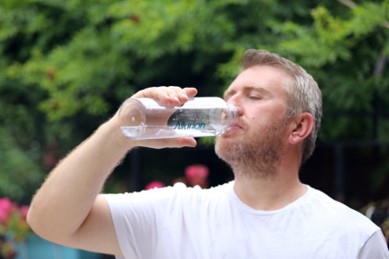
It is important to ensure that you are properly hydrated when you resume your exercise routine, or when you start a new one. During exercise, we lose fluid through sweat and breathing, and if we lose more fluid than we have consumed, it can lead to a negative fluid balance. Signs and symptoms of negative fluid balance include headache, negative mood, and poor concentration.2,3 Hence, drinking enough fluids to stay hydrated is a great habit that will support your weight loss and should start as soon as the gastric balloon has been placed.
The key thing to remember regarding exercise, is to start with gentle activities, listen to your body and increase the duration and intensity of what you do when you feel ready. It's important to take it easy and not push yourself too hard before your body is ready, as this can increase the risk of injury and set you back in your goal to be more active. Your clinic team can work through your goals with you based on your progress and how you feel.
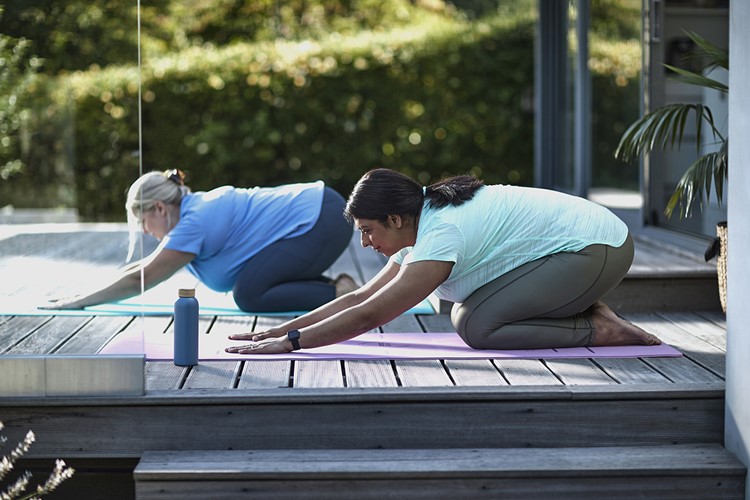
Safe exercises with your temporary gastric balloon
You might wonder, “What kind of exercise can I do with the gastric balloon inside me?” This temporary balloon is designed to partially fill the space in your stomach, which will help you feel satisfied after eating smaller meals and allow you to go about your normal daily activities. Incorporating all sorts of activity is definitely doable.
Lower-impact exercises in your daily routine is a great complement to the gastric balloon. These include walking, swimming, cycling, yoga, light circuit training, lifting light weights, or using an elliptical machine (mimics running with no impact on the joints).
It's important for everyone to get regular exercise, and this is no different when you have a gastric balloon. Exercise can help you burn more calories and tap into your body's fat stores, leading to weight loss. It also helps keep muscles toned and helps minimize the amount you lose, as your whole body gets smaller with weight loss. This can help maintain calorie-burning LBM and support your weight loss goals. The gastric balloon can give you a head start by helping you eat less but adding in more physical activity can help you reach your goals – and stay there. Here’s a wide range of exercises that can be done safely.
Walking – an easy way to lose calories!
Let’s start with the simplest (and least expensive) form of exercise there is: walking. After placement of the gastric balloon, you can start walking as long as you are comfortable and feel well-hydrated. Urine color, volume and frequency can be used as a rough guide to hydration status: a person passing a small amount of dark urine twice a day is certainly underhydrated. All forms of muscle contraction burn calories, and walking is a great way to put our largest muscle group to work. And let’s not disregard leisure walking. Walking briskly will burn more calories, get the heart rate up and help improve fitness, but a stroll during your lunch break or walking your dog for a longer time also burns calories – do them mindfully, in green spaces, and you’ll experience some of the pleasure that outdoor physical activity can bring.
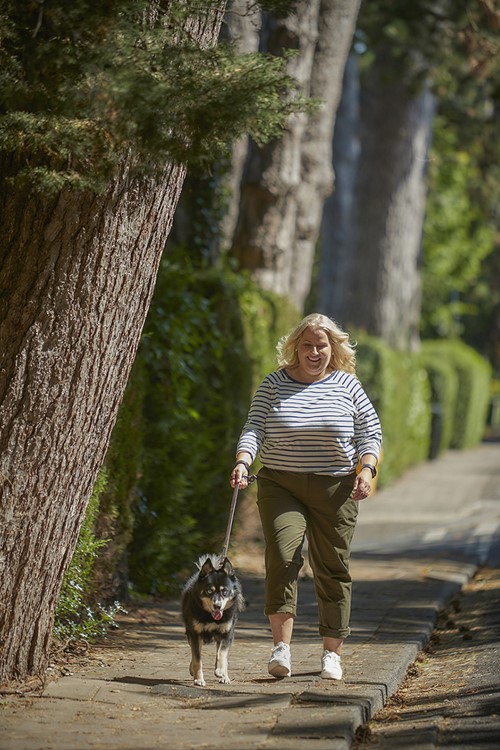
Low-impact exercises - aerobic and resistance exercise
Low-impact exercises are great for many people because they are gentler on the joints compared to high-impact exercises, which can make them more accessible and easier to stick with over time. Additionally, aerobic low-impact exercises like cycling or swimming can still provide a good cardiovascular workout, which help you burn calories and support weight loss.
They can also be a good option for people who may have injuries or mobility limitations that prevent them from doing high-impact exercises. Ultimately, the best exercise for losing weight is one that you enjoy and can consistently incorporate into your routine.
Resistance exercise, also known as strength training, involves using your muscles against some form of resistance, such as your own body weight or weights or resistance bands.
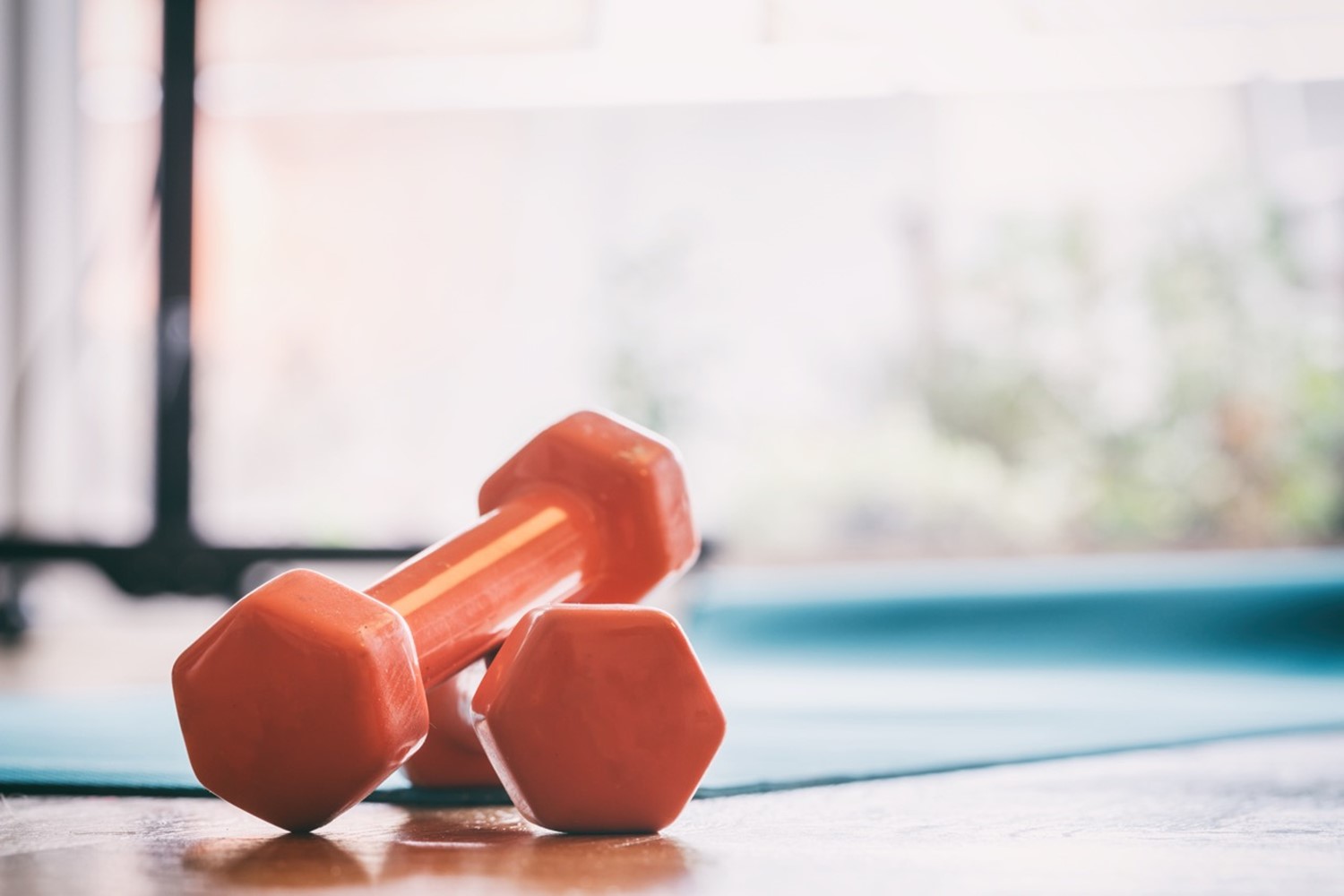
Strength training is important because it helps to build and maintain muscle mass, an important component of lean body mass (LBM). When you have more muscle mass, your body will burn more calories, even at rest, because muscle requires more energy to maintain than fat. This can help support weight loss and improve overall health and fitness. It's important to incorporate a variety of exercises that target different muscle groups into your routine to ensure that all your muscles are being worked. It's also a good idea to gradually increase the resistance or weight used as you get stronger to continue challenging your muscles.
Resistance-type exercise training combined with adequate protein intake has been shown to be effective in preserving high calorie-burning LBM.8
The benefits of exercise beyond calorie-burning
Exercise has many benefits for overall health and wellness. When you move your muscles, it requires energy, which is provided by ATP (adenosine triphosphate). Your body converts fat stores (and other short term energy sources from your muscles) into ATP to fuel muscle contractions. In other words, the more ATP your muscles use, the more fat your body needs to convert to provide that energy. Exercising regularly helps you use up more fat stores and support weight loss.
Being physically active has numerous benefits beyond just weight loss, including improving sleep quality. A poor night’s sleep can affect our desire for food throughout the day that follows.6 Poor sleep can increase the level of the hormone ghrelin, which can lead to increased cravings and potentially make it more difficult to resist temptation. Exercise can help reduce the time it takes to fall asleep and can also decrease the amount of time spent awake during the night, leading to better sleep duration and quality.
Our mental health is affected by many different factors. Life can be highly stressful – the occasional adrenaline rush can be exciting, but too much, and too often, may negatively affect our physical and mental wellbeing. Looking after the psychological aspect of our health is just as important on a weight loss journey – there is usually a battle of some kind going on in the mind and this can be mentally exhausting. Exercise is good for our mental health, helping to improve our mood and reduce anxiety.7 It’s not fully understood how exercise does this, but it’s likely to be a mix of things, such as improved sleep, a feeling that one is coping better with life, a change in brain chemistry. In fact, a single workout will immediately increase levels of dopamine and serotonin right after, promoting positive feelings and protecting your brain in the long run against neurodegenerative diseases.8
The gastric balloon gives a great kick-start to weight loss. To maintain progress and continue losing weight (if you want to) after the balloon has naturally deflated and been removed, it is important to adopt and maintain healthier habits.
While research suggests that a combination of healthy eating and increased physical activity leads to more effective weight loss compared to just focusing on diet alone, (with an average of 20% greater weight loss), the evidence of how exercise supports weight loss maintenance is even more compelling.
The amount of physical activity that is needed to support weight loss maintenance can vary from person to person, but most people need to do more than 150 minutes of moderate-intensity activity per week to maintain weight9.
For weight loss, combining activity (40 to 60 minutes per day) with a healthy diet increases the chances of success. For weight loss maintenance, high levels of physical activity (40 to 90 minutes per day) may be necessary10.
Therefore, incorporating both healthy eating and regular exercise into your lifestyle can be key to achieving and maintaining successful weight loss.
* In rare cases, the Allurion Balloon may require endoscopic or surgical intervention for removal.
References
- Long-term weight loss after diet and exercise: a systematic review. International Journal of Obesity volume 29, pages1168–1174 (2005)
- Water-deprivation headache: a new headache with two variants Headache. 2004 Jan;44(1):79-83
- Mild Dehydration Affects Mood in Healthy Young Women. The Journal of Nutrition, Volume 142, Issue 2, February 2012, Pages 382–388
- A systematic review, meta-analysis and meta-regression of the effect of protein supplementation on resistance training-induced gains inmuscle mass and strength in healthy adults. Br J Sports Med. 2018 Mar;52(6):376-384.
- https://tanita.eu/blog/lean-body-mass-explained
- The impact of sleep deprivation on food desire in the human brain
- Exercise Interventions for Mental Health: A Quantitative and Qualitative Review. Clinical Psychology: Science and Practice, 13(2), 179–193
- https://www.ted.com/talks/wendy_suzuki_the_brain_changing_benefits_of_exercise?language=en
- CDC. Benefits of physical activity. 2020. Retrieved from https://www.cdc.gov/physicalactivity/basics/pa-health/index.htm
- Goldberg JH, King AC. Physical activity and weight management across the lifespan. Annu. Rev. Public Health. 2007 Apr 21;28:145-70.


